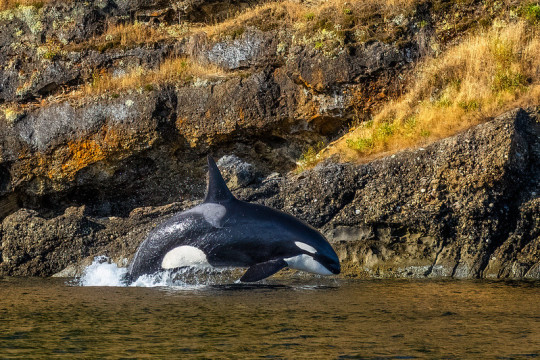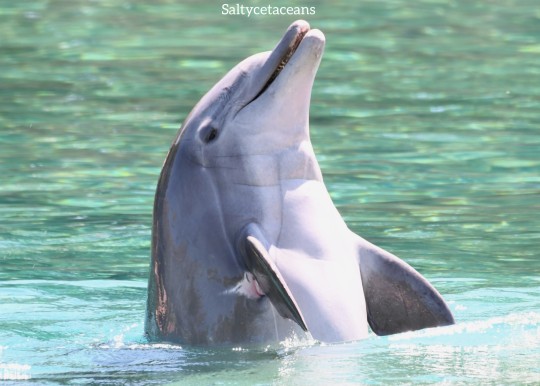#Delphinidae
Explore tagged Tumblr posts
Text

False killer whale Pseudorca crassidens
Observed by dnoby, CC BY-NC
#Pseudorca crassidens#false killer whale#Cetacea#Delphinidae#cetacean#dolphin#whale#Oceania#Fiji#Pacific Ocean#underwater
28 notes
·
View notes
Text

Southern Right Whale Dolphin (Lissodelphis peronii), family Delphinidae, Strait of Magellan, Chile
photographs by Pablo Cáceres
1K notes
·
View notes
Text

An orca (Orcinus orca) breaches off the coast of the Pacific Northwest, USA
by Guy Schmickle
#orca#killer whale#dolphins#cetaceans#marine mammals#orcinus orca#orcinus#delphinidae#cetacea#artiodactyla#mammalia#chordata#wildlife: usa#wildlife: north america
2K notes
·
View notes
Note
Southern right whale dolphins
Oh a very cool one, hadn't seen them before! Thank you!


Photos from Gerard Bodineau & Toby Dickson, respectively.
#south america#australia#new zealand#south africa#southern ocean#southern right whale#southern right whale dolphin#dolphin#artiodactyla#cetacea#cetacean#delphinidae#marine mammals#marine biology#sea life#marine life#marine animals#animal polls#poll blog#my polls#animals#polls#tumblr polls#mammalia#mammals#mammal
63 notes
·
View notes
Text
Uncharismatic Fact of the Day
Nothing says 'bisexual' quite like bottlenose dolphins! Studies have shown that almost all males in this species are bisexual, and form close partnerships with other males at an early age. Male partners hunt together, play together, and even keep watch while the other sleeps. Couples remain together for most of their lives-- although typically both partners also freely mate with females during the breeding season.

(Image: A pair of common bottlenose dolphins (Tursiops truncatus) by Lisa Morse)
#bottlenose dolphin#Artiodactyla#Delphinidae#dolphins#cetaceans#even-toed ungulates#ungulates#mammals#uncharismatic facts#queer fauna#nature is queer
87 notes
·
View notes
Photo

DOLPHIN MOMS DO 'BABY TALK' WITH THEIR CALVES
Baby talk or Motherese/ Parentese is a speech pattern nearly universal across cultures and languages in human caregivers interacting with children. It is characterized by a higher than usual pitch, exaggerated intonation, repetition, calling attention to objects and use of slow stretchy speeches. What we know about baby talking in other nonhuman species is sparse. Now, researchers have found evidence for baby talk in bottlenose dolphin, a species that shows parallels to humans in their long-term mother–offspring bonds and lifelong vocal learning.
Researchers analyzed audios from made wild bottlenose dolphins in waters near Sarasota Bay, Florida, United States, and found that females produced signature whistles with significantly higher maximum frequencies and wider frequency ranges when they were recorded with their own dependent calves.
This finding provide an example of convergent evolution of motherese in nonhuman mammals, and may help us understand how motherese can facilitate vocal learning and bonding in nonhumans as well as humans.
Photo by Carli Brush Stoll
Reference: Sayigh et al., 2023. Bottlenose dolphin mothers modify signature whistles in the presence of their own calves. PNAS
#Science#marine science#behavior#biology#marine biology#bottlenose dolphin#tursiops truncatus#delphinidae#bioblr#sciblr#scienceblr
342 notes
·
View notes
Text
Does anyone else find it genuinely fascinating that orcas tail-slapping their prey out of the water means that they have to have some understanding of how anything would take damage from hitting the water surface from a certain height (which is wickedly impressive for an animal that lives underwater it's whole life) or do you all just jump to calling them evil because of this
#sorry im an orca stan they're peak animals to me#ben's bs#zoology#cetacean#whale#orca#dolphin#delphinidae#marine biology#marine life#orca whale#killer whale#hate that name btw its so mean :(
37 notes
·
View notes
Text
DrawingofSakuratage13doingadolphinversionofWaterStyle:SharkBomb!!!!!
(I haven't actually drawn it yet. Will add it here as soon as I'm able to.)
#pro haruno sakura#badass sakura#bamf sakura#sakura using suiton#suiton — suishīradan no jutsu#suiton — water dolphin bomb jutsu#water style — water dolphin bomb technique#water release — water dolphin bomb technique#water#dolphin#delphinidae#lipotidae#dolphins#& sakura#sakura haruno#haruno#haruno sakura#sakura#naruto au#alternate multiverse
7 notes
·
View notes
Text

Common Bottlenose Dolphin (Tursiops truncatus) - (c) SaritaWolf - please do not repost
5 notes
·
View notes
Video
#Orca#Whale#Killer Whale#Orcinus#Mammal#Aquatic#Creature#Wildlife#Fin#Marine#Life#Swimming#Surfacing#Delphinidae#Nature#Outdoors#Fjord#Salt Water#Sea#Cool#Blue#Silvery#Hues#Seascape#Sheen#Resurrection Bay#Blying Sound#Kenai Peninsula#Alaska#Gulf of Alaska
5 notes
·
View notes
Text

New Zealand dusky dolphin "Lagenorhynchus" obscurus ssp.
Observed by rwilkes, CC BY-NC
#Lagenorhynchus obscurus ssp.#New Zealand dusky dolphin#Cetacea#Delphinidae#cetacean#dolphin#Oceania#New Zealand#Pacific Ocean
392 notes
·
View notes
Note
🥚?

hourglass dolphin!
(Lagenorhynchus cruciger)
41 notes
·
View notes
Text

An orca (Orcinus orca) breaches in Sommarøy, Norway
by Bo Eide
#orca#killer whale#dolphins#cetaceans#marine mammals#orcinus orca#orcinus#delphinidae#ctacea#artiodactyla#mammalia#chordata#wildlife: norway#wildlife: europe
2K notes
·
View notes
Text



#nature video#bottlenose dolphin#tursiops truncatus#delphinidae#marine wildlife#marine mammals#mission bay#san diego#video
2 notes
·
View notes
Text
three (3) hours till my exam this means i get to study dolphin anatomy
3 notes
·
View notes
Text



I'm actually alive, here's photos I've taken of Akai - who is one of the older dolphins at DCO and is going to be in his 50s very soon <3
#Akai#bottlenose dolphin#discovery cove#seaworld#seaworld orlando#marine biology#dolphin#marine life#cetacean#animal photography#marine animal photography#whale#Delphinidae#Tursiops
9 notes
·
View notes